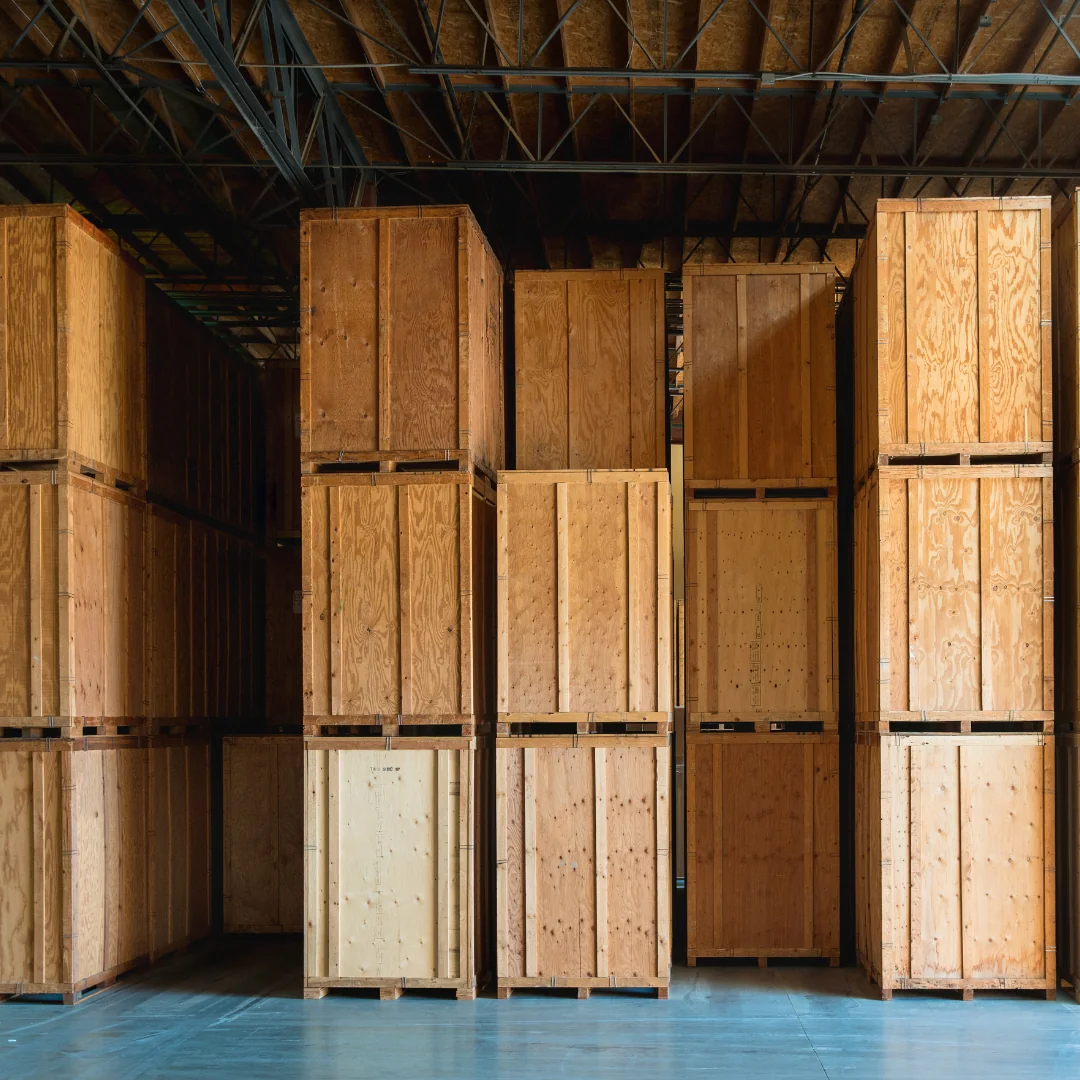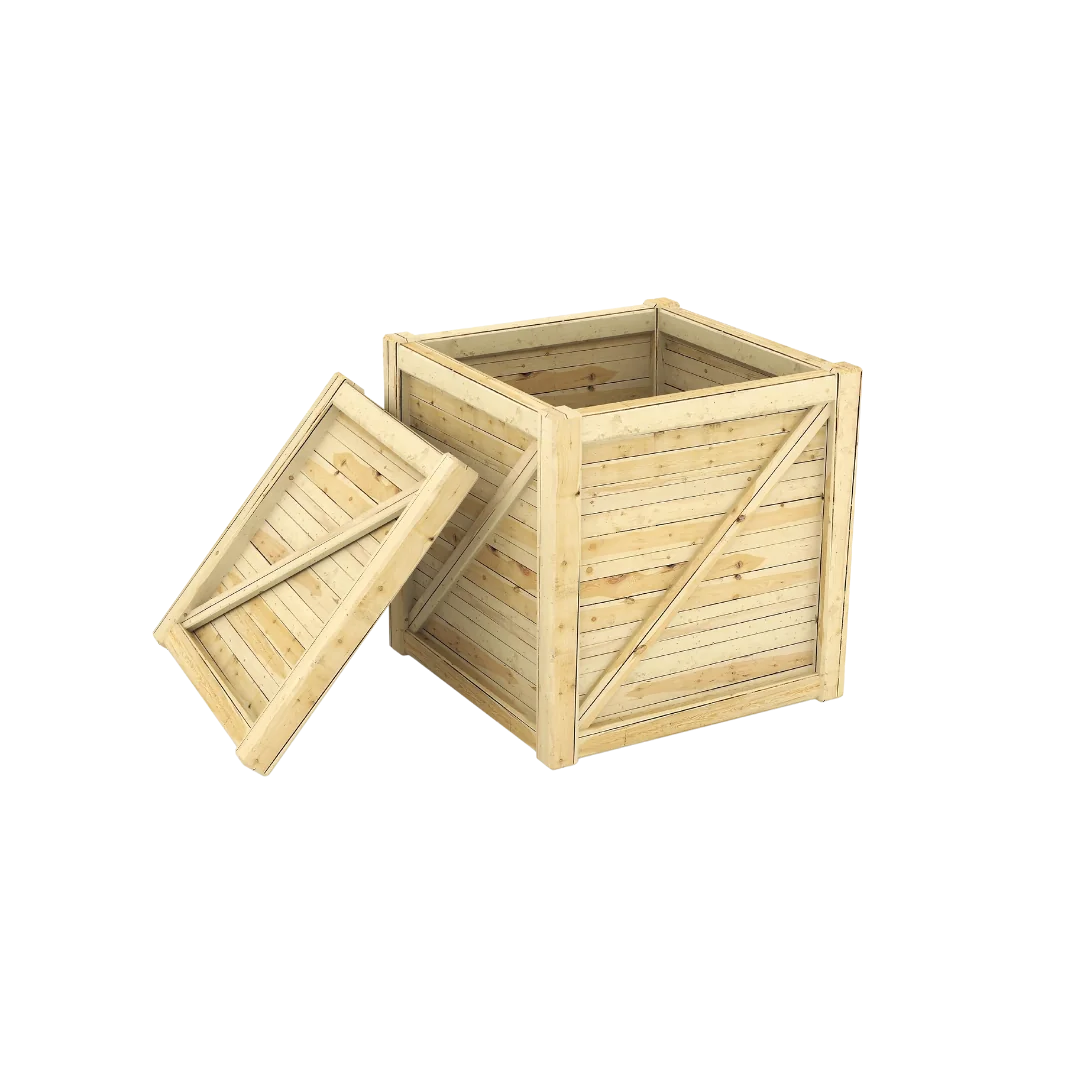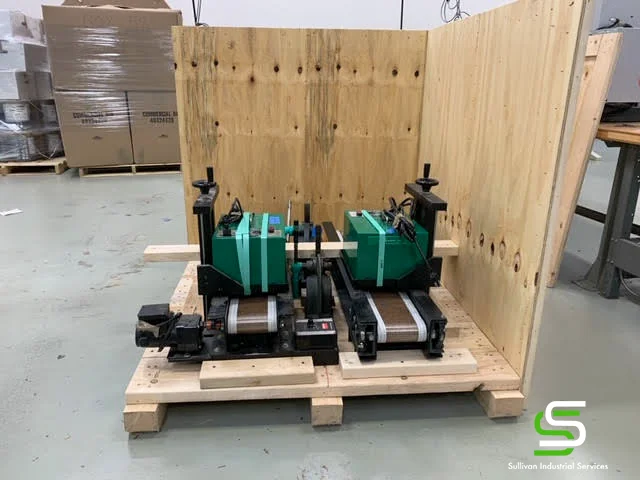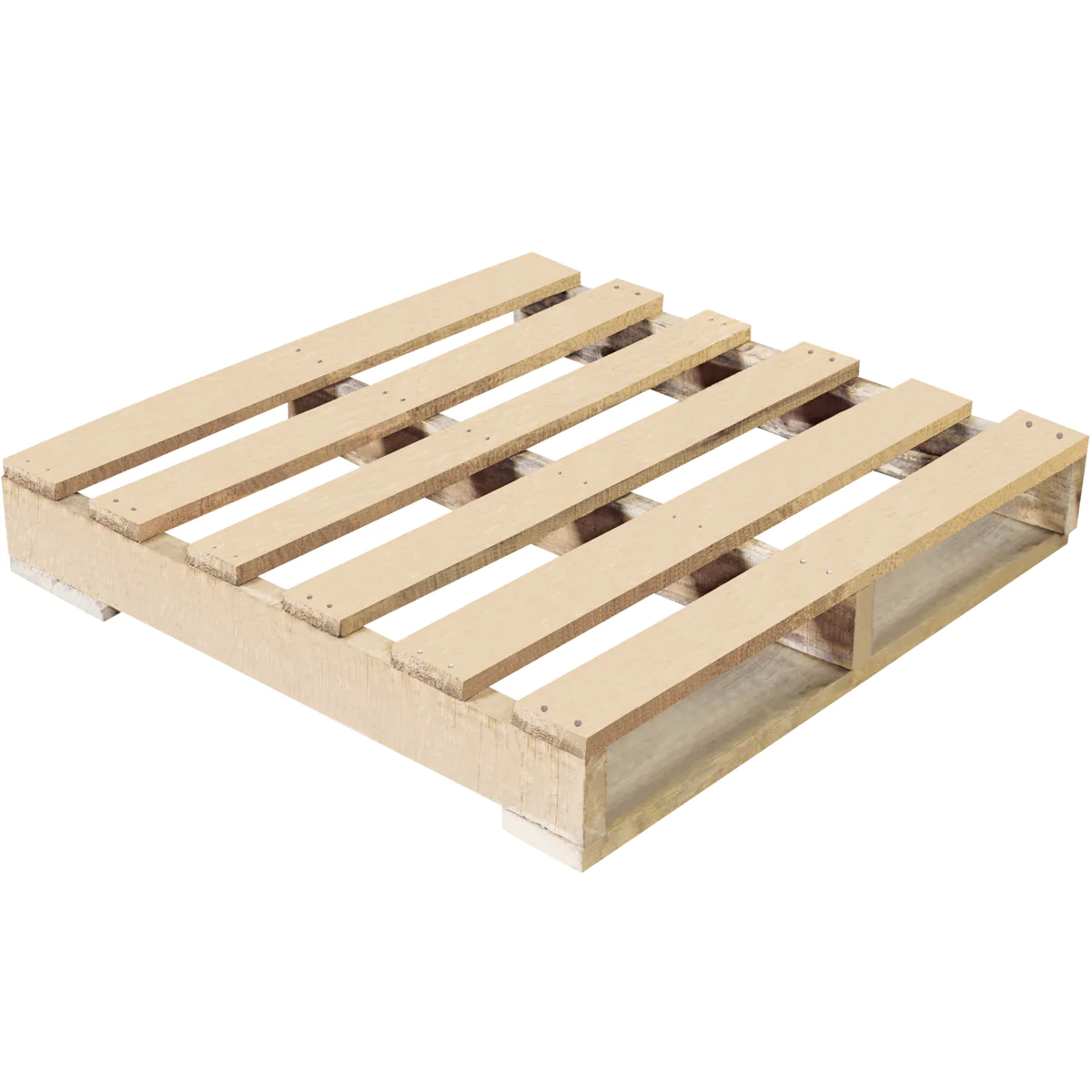
Crating Services & Shipment Preparation
FreightCenter explains why Crating Services & Shipment Preparation provide the highest level of protection against damage and loss of your freight shipment. Packaging and Crating services are available using FreightCenter's best-in-class service.
Crating is considered the best way to protect many types of freight. Some shippers prefer to make their crates instead of having them made professionally. Customers shipping extremely fragile items with a high value, such as furniture, tend to have their containers made by a professional crating service. It can be very economical to pay to have your items crated by a company rather than buying all the supplies yourself and taking a day to build the crate.

Proper packing or crating will allow your shipment to withstand road vibrations and cross-docking during transit. If your item is fragile or has a high value, crating is the absolute best solution. Not only does crating provide the highest protection against damage and loss, but you also get the highest level of security to the strength of the crate. Strong build crates protect against damage and can stack items on top without damaging the contents inside. Crating can save money and possibly give a “stackable shipment” discount.

The short answer is yes! Please make sure you strap your crate to a pallet. Having your item palletized will allow you to move quickly by a forklift. Putting your container on a pallet may ensure your shipment gets on time. If your crate is on a pallet, the freight carrier can move it from one trailer to another.

It’s nearly a universal truth that packaging your freight on a shipping pallet helps keep it safer and more more secure during transit and handling. Tips for palletizing your freight:
-
Keep it contained. If freight hangs over the edge of the pallet, damage may occur because there is no support for the freight while in transit.
-
Flat tops rock. Be sure the top of the pallet has a flat surface. Otherwise, place single containers of freight on an outside corner, or ship them separately.
-
No love for interlocking. The pallet loses its strength by arranging your freight in an interlocked pattern. Arrange boxes in a uniform and lined-up fashion for maximum strength.
-
Birds of a feather flock together. Different-sized boxes might not be uniform enough to achieve unit strength—Palletize boxes of similar shape together and ship other boxes separately or on their pallet.
-
Flaps up before takeoff. All box flaps and corrugations should be facing up, as they are the most compromised side of the box.
-
Cuddle your cargo. Wrap your shipment with blankets or other cushioned material to provide an extra layer of protection and buffering.
-
No wiggle room. You can secure freight to the pallet with banding, shrink-wrap, or spray adhesive.
As an added level of protection, some shippers choose to shrink-wrap by strapping them to a pallet and shrink-wrapping it. This step is only sometimes necessary; however, shrink-wrapping your crate allows you to secure documentation and small accessories to the container.
The extra weight of the crate and its size will affect your final shipping price. It is common for a wooden crate and pallet to ad 100lbs+ to a shipment. It is essential to make sure your BOL shows the packed and palleted weight and dimensions on it. Please include the crate and pallet weight or measurements to ensure your shipment gets on time. Building your crate is something you can do. If not, we recommend that a professional crating company crate your shipment. Check out our packaging and crating tips below.
-
What quality packaging materials do they use?
-
Do they custom measure and build to your specific needs?
-
Do they offer any kind of warranty or insurance?
-
Can they build the crate on site or does it need to be shipped to you?What are the estimated costs involved?
-
Is the crate rated for domestic or international shipping?
-
What weight and dimensions is the crate going to add to my shipment costs?
Learn the best ways to save time and money when you package and ship freight.
Avoid costly damage to your shipment by protecting it against road and warehouse conditions. This guide will help you prevent damage and loss by properly packing, securing, and labeling your shipment.
Unless your freight requires a full truckload, your shipment will be grouped with other less-than-truckload (LTL) shipments and shipped by truck. An adequately packed shipment is your best protection against damage. An improperly packed or poorly addressed load may cause delays and unnecessary damage.
We recommend following advice on how to pack and crate to avoid these problems.
A handling unit is a bundle of freight that is individually identified and transported. What may have started as ten individually packaged boxes, might now be ten boxes shrink wrapped together onto one pallet. If you have ten individual boxes that are all going to the same location, it makes sense to bundle them onto a pallet and ship as one handling unit. Not only does this method save you money by only shipping once, it’ll also save you the stress of having to keep track of ten individual shipments.
In the freight industry, we’re all about making things faster, more innovative, and overall more efficient. If there’s a way for a shipment to be condensed or for a truckload capacity to be maximized to save you money and time – we’re all over that. Luckily, there are countless methods for making shipping more seamless, the first way being – packaging. The way freight is packaged can make all the difference. It can change the shipping price, how it’s handled during transit, and even where it gets placed on a freight truck. Packaging your freight is a crucial step, not one on which you should cut corners. Various packaging options are available, and specific packaging options are best suited to the commodity you’re shipping.
-
Palletizing
A shipping pallet is an option when you have an oversized item that won’t fit within the confinements of a crate. Additionally, shipping pallets are a wise choice when you have several smaller boxes to consolidate and shrink-wrap into one handling unit. Pro tip: Thoroughly bubble wrap your freight before shrink-wrapping it to the pallet. Pallets or skids come in standard sizes (48″ x 40″) that can easily be purchased, or ask your local grocer or large retailers if they can provide you with one. Large items and multiple boxes should be adequately palletized. Make sure your boxes or crates do not overhang the pallet. When boxes or containers are stacked on a pallet, the boxes should be distributed evenly. Use heavy-duty plastic wrap to strap or secure your item(s) directly to the pallet if needed.
Be sure you have a loading dock or forklift at the pick-up and delivery location. If the pick-up and delivery locations do not have a dock, you must request a truck with a lift gate. There is an additional charge for added equipment options.
-
Crating
For maximum protection, a shipping crate is a way to go. While, on its own, a wooden crate provides substantial protection for your cargo, stuffing it full of protective material, such as packing peanuts, offers even more security for your freight. Crating provides the highest level of protection against damage and loss. This packing method is for high-value, fragile, overweight, and easily damaged Items. The advantage of using a crate is protection; the disadvantage is its added weight, size, and cost. It should be crated by a professional crating company or someone with experience. Even small items may cost $50.00 – $100.00 to ship, with large items costing hundreds of dollars. Check out our packaging tips for more information on how to crate.
-
Double Corrugated Cardboard
Although not the most protective method for packaging, boxes are sufficient for individual items that will be combined onto one pallet and further reinforced. Using heavy grades (or double layers) of cardboard is often a reasonable option for crating. Protect the finish with quality corrugated cardboard for furniture and other oversized items, and strap the thing with strapping bands or nylon strapping tape. A great majority of freight is shipped in this manner. Double boxing is a must for China, glassware, and other small, fragile items. The shipper should place all boxes or crated items inside the shipping box with at least 2″ padding. Do not over-pack boxes.
-
Standard Grade Corrugated Cardboard
Less fragile items, such as books, clothing, etc., may be successfully shipped in an appropriate grade of corrugated cardboard. Make sure your box is in new or good condition. Used containers are acceptable as long as they are labeled clearly and continue to be sturdy.
-
Over Wrapped
Overwrapping is unnecessary for some items but can be a real cost-saver in certain situations. Use this method of packing for items that are not easily damaged or that cannot be scratched or marred. Materials used for overwrapping include cardboard, plastic, canvas, etc.
-
Drums or Shipping Barrels
A drum or shipping barrel is an excellent option for shipping large amounts of liquid, such as oil or chemicals. If your liquids are categorized as hazardous materials, they will cost more to ship and may need to be transported by a carrier licensed to handle hazmat freight. Be sure to talk with your Freight Agent about what options are available to you.
-
Unpackaged Shipments
A risky move, albeit sometimes the only choice. Oversized freight has far and few options for packaging when it doesn’t fit within the constraints of a shipping crate or pallet. Sometimes, you may ship an item “as is” with no packaging or protection. When this happens, the best option you have is to heavily wrap your item in protective layers such as bubble wrap, tarp, or blankets, then finish off with several layers of shrink wrap to secure everything together. Because of its unique size, shape”, and”build material, some items may be shipped unpackaged. These types of things can and will withstand freight shipping without protection. Generally, these items are not easily damaged, destroyed, or compromised by normal shipping conditions.
-
Labeling
The most important thing to remember about labeling your freight is to ensure that the labels provided to you by FreightCenter are attached to your freight and remain visible. By taping over your labels in clear tape, you provide extra assurance that the label will remain intact. If the truck driver who picks up your freight cannot locate the attached label, you may be subject to additional charges. Avoid this by securely placing two copies of the label on your freight – one on the long side and one on the short side. Your freight shipment’s journey starts with how it’s packaged. The choices you make and routes you take when getting your freight ready for shipment to determine how things will play out for the remainder of your freight’s time in transit. Be sure to package your freight securely and thoroughly to ensure it will be safe during its travels. It would be best to label your shipment correctly to avoid getting misplaced or lost. All items should have the address and telephone number marked for both the shipper and consignee (ship to person). Additionally, it is helpful to include any special instructions, contacts, optional telephone numbers, and hours available for delivery.
-
Shipping / Receiving
FreightCenter agents function much like travel agents for your freight, providing suggestions and making recommendations on how best to execute the logistics for your shipment. Freight agents can advise on how to package and ship and download appropriate BOL paperwork and documents.
Upon booking, you will receive proof of shipment, tracking PRO numbers, carrier telephone numbers, and customer service numbers. You should count and inspect the contents for damage when your shipment is delivered. Any problems or shortages should be noted on the driver’s manifest, as the carrier is liable for safe and timely delivery.
We provide competitive freight shipping prices and an all-inclusive, easy-to-use shipping experience for our customers. Exceeding our customers’ expectations results in thousands of satisfied customer reviews and repeat business. We believe in the power of our customer relationships. Check out FreightCenter reviews from real customers, and learn what they have to say about their freight shipping experience!
